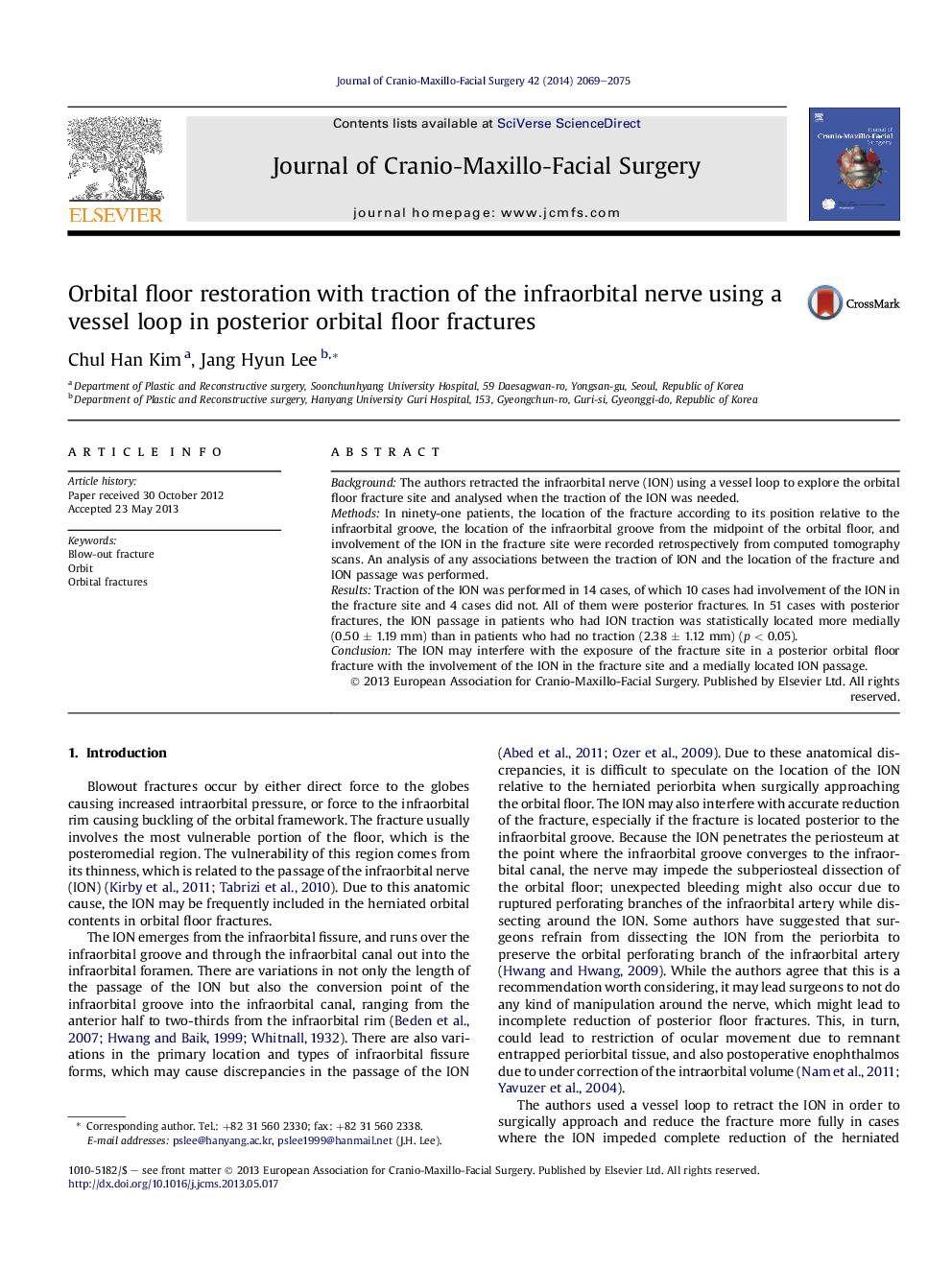| Article ID | Journal | Published Year | Pages | File Type |
|---|---|---|---|---|
| 3142789 | Journal of Cranio-Maxillofacial Surgery | 2014 | 7 Pages |
BackgroundThe authors retracted the infraorbital nerve (ION) using a vessel loop to explore the orbital floor fracture site and analysed when the traction of the ION was needed.MethodsIn ninety-one patients, the location of the fracture according to its position relative to the infraorbital groove, the location of the infraorbital groove from the midpoint of the orbital floor, and involvement of the ION in the fracture site were recorded retrospectively from computed tomography scans. An analysis of any associations between the traction of ION and the location of the fracture and ION passage was performed.ResultsTraction of the ION was performed in 14 cases, of which 10 cases had involvement of the ION in the fracture site and 4 cases did not. All of them were posterior fractures. In 51 cases with posterior fractures, the ION passage in patients who had ION traction was statistically located more medially (0.50 ± 1.19 mm) than in patients who had no traction (2.38 ± 1.12 mm) (p < 0.05).ConclusionThe ION may interfere with the exposure of the fracture site in a posterior orbital floor fracture with the involvement of the ION in the fracture site and a medially located ION passage.
